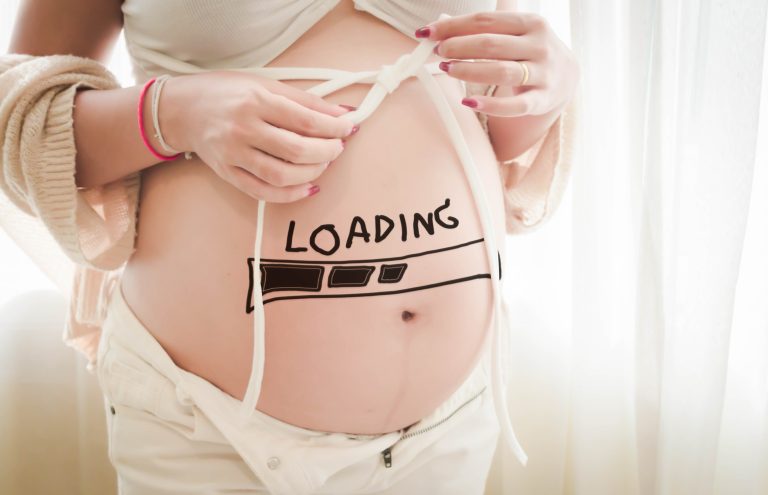Labour Signs
Most women who are worried about not recognising the onset of labour typically do realise when labour begins. Instinctively, through either intensity or frequency of contractions that leave no room for doubt, the majority head to the hospital neither too early nor too late but just in time. Of course, you don’t have to leave it all to chance. Knowing pre-labour signs and distinguishing between false and true labour signs will alleviate your surprise and concerns.
No one knows exactly what triggers labour. It is believed that a group of natural substances produced by the body (prostaglandins) play a crucial role in this process. It is known that the prostaglandins produced by the uterus during pregnancy increase significantly during normal labour. These substances trigger the muscles in the uterus and stimulate the release of oxytocin from the pituitary gland. Both are important factors in the onset of labour.
Signs of Approaching Labour
Physical changes before labour can occur as early as one hour before or up to a month before. The main feature of pre-labour is the thinning and widening of the cervix, which only your doctor can detect. However, there are various changes that you can notice:
- Engagement and descent: In first-time mothers, the baby usually starts to descend into the pelvis two to four weeks before labour begins. But in subsequent pregnancies, this sign may not be noticed.
- Increased pressure in the pelvic area and rectum: The descent of the baby increases the pressure felt in these areas.
- Weight loss or cessation of weight gain: Weight gain usually slows down in the ninth month of pregnancy, and some women even lose one or two kilos as labour approaches.
- Changes in energy levels: Women in the ninth month of pregnancy gradually feel more tired. Some, however, experience an increase in energy instead.
- Loss of the mucous plug: As the cervix thins and dilates, the mucous plug that blocks the exit of the uterus starts to dislodge. This substance is expelled from the vagina one or two weeks before the onset of real contractions or as soon as labour begins.
- Pink or bloody discharge: As the cervix widens and thins, the tiny blood vessels in that area often rupture, causing the discharge to turn pink. This ‘show’ usually indicates that labour will begin within 24 hours. However, the show can occur two to three days before labour begins. Therefore, before going to the hospital, you should wait for regular contractions to start or for your waters to break.
- Intensification of Braxton Hicks contractions: These practice contractions, which begin after the 20th week of pregnancy and are akin to rehearsals for labour, serve to prepare the muscles of the uterus for the real contractions that will push the baby. These contractions are usually painless and last between 30 seconds and 2 minutes. Towards the end of the ninth month of pregnancy, Braxton Hicks contractions become more frequent and intense. Sometimes they can be painful, making it difficult to distinguish them from real labour contractions.
- Diarrhoea: Some women may experience diarrhoea just before the onset of labour.
False Labour Signs: What Are They?
If the following symptoms are present, real labour has probably not yet begun:
- Contractions are irregular and not increasing in frequency or intensity,
- Pain is felt in the lower abdomen rather than in the back,
- Contractions subside when walking or changing positions,
- If the discharge is brown (if bright red blood is present, contact your doctor immediately),
- Fetal movements increase briefly with contractions.
Real Labour Signs: What Are They?
If pre-labour contractions become stronger and more frequent, it may be considered true labour. If the following signs are present, it is likely true labour:
- Contractions increase in intensity when you move and do not decrease with changes in position,
- Pain starts in the back and moves to the abdomen, and even to the legs,
- Contractions occur regularly and do not ease with rest (time your contractions; if they are coming every five minutes or more frequently, there is no need to panic),
- Contractions become more frequent, regular, and painful as labour progresses (their intensity also increases),
- Pink or bloody discharge is present,
- The amniotic sac ruptures (the sac surrounding the baby, containing amniotic fluid, suddenly tears open before labour).
Note: If the baby’s head has descended into the birth canal, the amount of fluid coming out will not be very much. Even if labour pains have not yet started, you should go to the hospital when your waters break because there is a risk of infection for the baby.
Is Nausea a Sign of Labour?
For many women, the onset of labour is accompanied by mild stomach contractions. These contractions can sometimes be felt as lower back pain. If labour is underway, these pains intensify, last longer, and occur more frequently. Nausea can also become widespread a day or two before the onset of labour. If you experience troubling nausea, you should see your doctor immediately.
Is a Very Active Baby a Sign of Labour?
Increased bowel movements and softening are among the easiest signs of impending labour to notice. Your body automatically empties your bowels to ease the passage of the baby.
Most women experience constipation during pregnancy due to the pressure exerted by the growing uterus on the intestines and other factors. As labour approaches, you may suddenly need to go to the toilet several times a day, have a bowel movement, and notice diarrhoea-like symptoms. If you have had several bowel movements before labour, you should share this with your doctor.
When Should You Go to the Hospital?
First and foremost, talk to your doctor who is monitoring your pregnancy about what the signs of labour are and what to do in each case. Knowing when to act will reassure you and help you overcome your fear of childbirth. You may want to panic as soon as your contractions start. However, the best action is to inform your doctor about your current situation first.
If contractions are less than 5 minutes apart and last for at least 30 seconds, it’s time to go to the hospital. At this point, you need to be able to distinguish between false labour contractions and true labour contractions. If you’re not sure, you can try taking a warm shower. False contractions usually disappear after a shower. If your contractions are still ongoing and intensifying, it means labour has begun.
The last weeks of pregnancy for expectant mothers are spent in a mix of excitement to meet their babies and stress about childbirth. However, it is important to remember that childbirth, although painful, is a very different and unique experience that many women may want to experience repeatedly. Instead of fearing childbirth, try to enjoy every moment by being informed about the signs of labour. Remember, at the end of it all, something wonderful awaits you!




